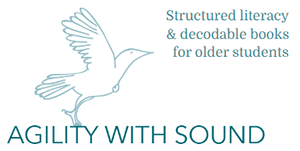Syllables and rules: are they helpful?
Do competent adult readers think in syllables or rules when they encounter an unfamiliar word?
It seems they do not. At every PLD I deliver, I give participants a range of multisyllabic pseudowords. Many of them have more than one possible pronunciation, at least in theory. Will it be ine as in determine, or as in alkaline, or as in routine? Will cial be pronounced as in special, or as in in speciality?
I give them just a second or two to figure the word out, and all of them, so far as I can tell, come to the same pronunciation. I then ask them to reflect on what happened in their head. Some do not know; it just happened. Others report a word with an analogous pattern flashing through their head. Nobody has yet said, “I applied that rule,” or “I sorted out the syllables.”
Young students understand the syllables of speech, or they need to come to that understanding. Syllable knowledge is certainly effective in conjunction with the set for variability strategy these children are learning. This works for words in the child’s oral vocabulary, the vast majority of words beginner readers encounter. And, of course, we think in syllables as we spell words.
However, as students advance, they encounter more and more new words that are not in their oral vocabulary; they encounter increasingly complex orthography. Applying syllable types and the set for variability no longer works. Students must learn to recognise words from their make-up alone, from consistent patterns, to recognise the essential regularity and predictability of English. The sooner this starts, the better.

